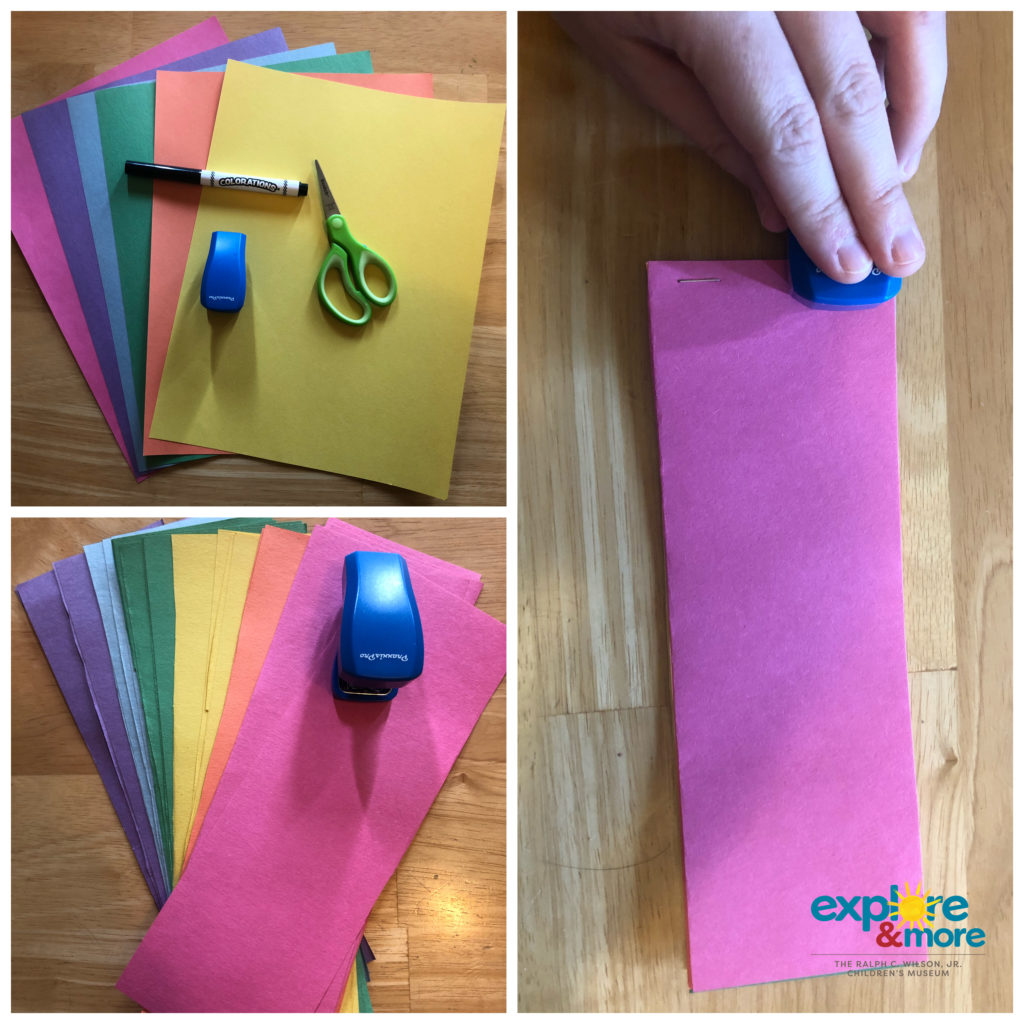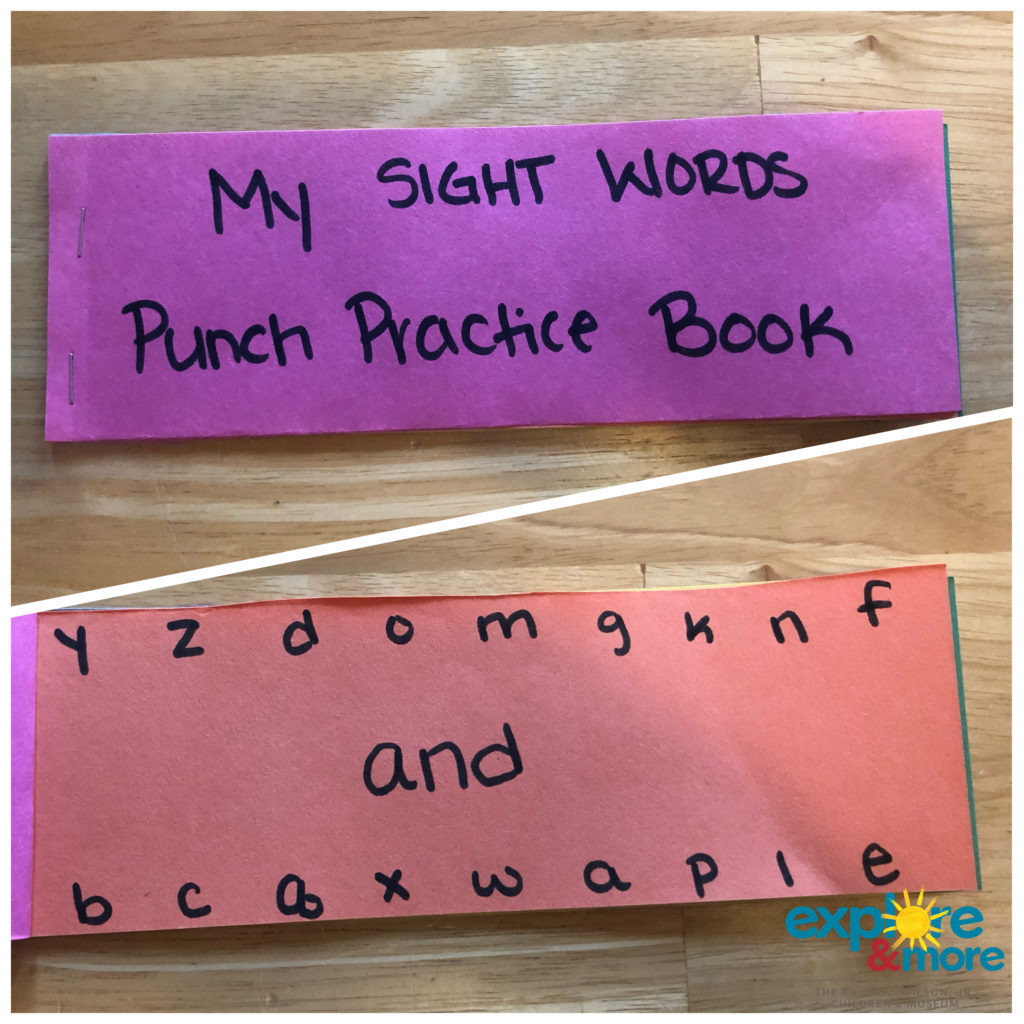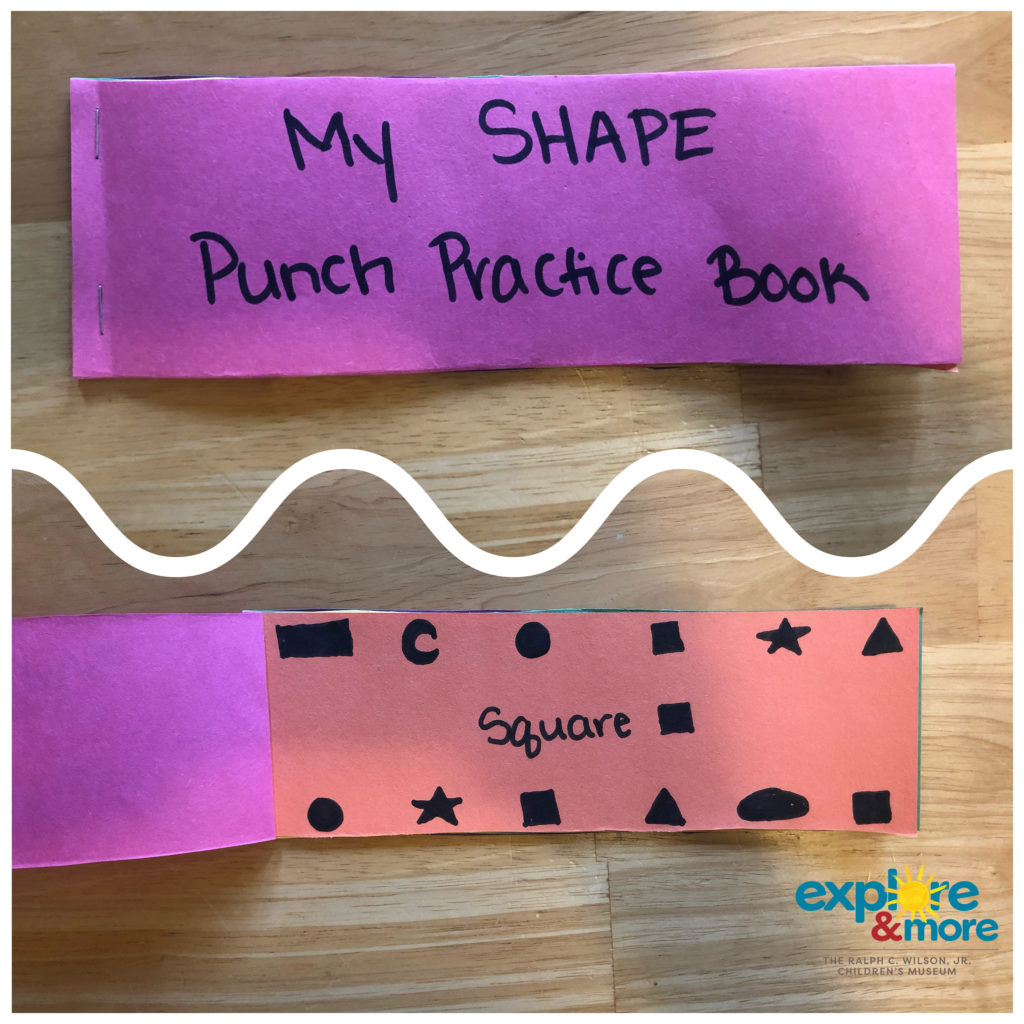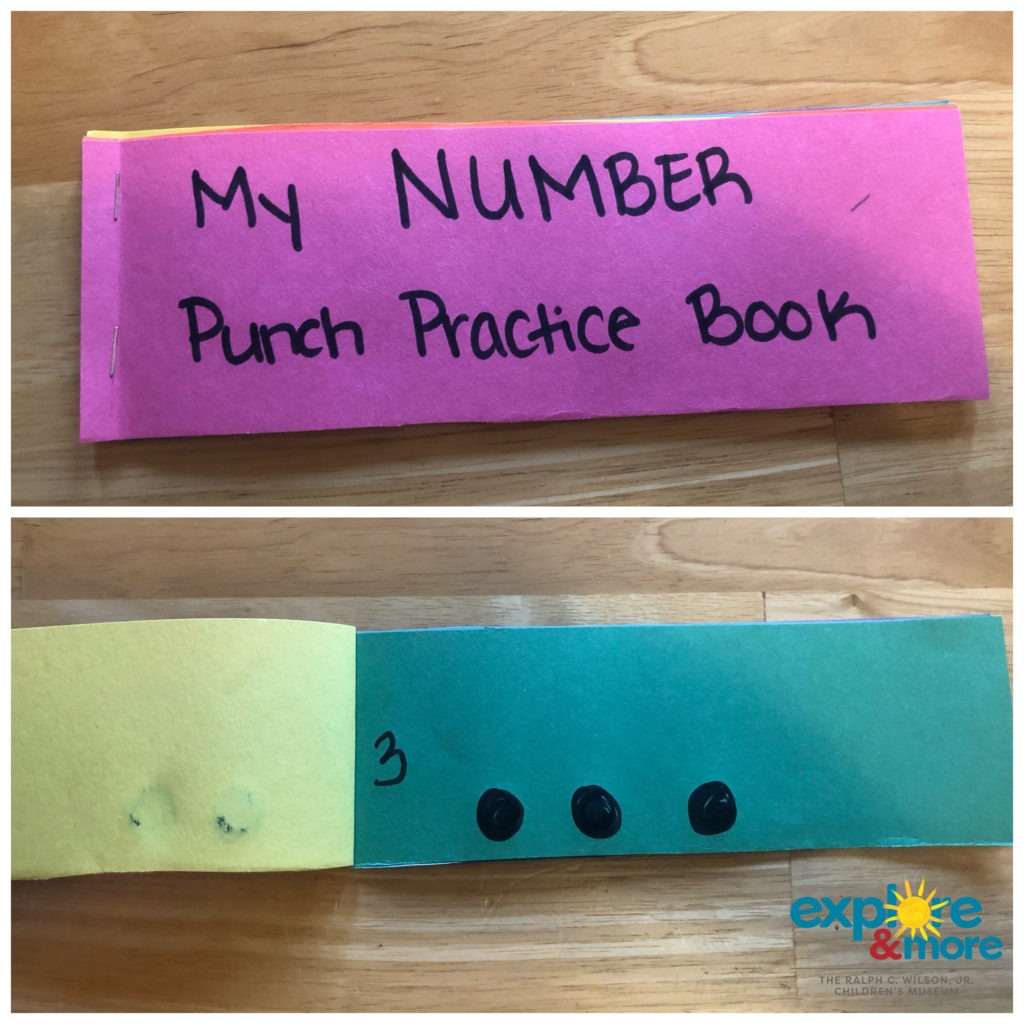sponsored by: m&t bank
By: Amelia Schrader
Senior Manager of Learning and Education
Materials:
Tweezer Station
Child-safe plastic tweezers
Various colored objects (scraps of paper, pom-poms etc.)
Color sort sheet (download here)
Tracing Station
Tracing Worksheet (download here)
Colored marker or pencil
Dot Station
Dot practice worksheet (download here)
Bingo dabbers or similar (can also use stickers if you don’t have a dabber)
Punching Station
Paper Strips
Stapler
Pencil or pen
Hole Puncher
Beading/Stringing Station
String or yarn
Large wooden beads (be careful to choose a large enough of size to prevent choking)
Length:
Set Up/Prep: 10 minutes
Activity: 25 minutes +
Development Subject Areas: Cognition – Knowledge of the World Fine Motor Development
Fine motor practice is incredibly important for early childhood development. These stations will help develop your child’s fine motor skills. These stations can also be beneficial for a child who is receiving Occupational Therapy (OT) services at school. Fine motor develop is crucial for your child to accomplish daily activities including writing, drawing, feeding themselves, dressing themselves etc.
Directions:
Step 1: First you will need to compile the punch book(s) for the punching station. You can tailor these books to your child’s skill level! The most basic book is put together simply by stapling a set of paper strips together as pictured below. Remember, even turning the pages of this simple book is a fine motor skill! You can also add challenges for this punch books as your child continues to grow and learn!
Here are some suggested adaptations:
1. Shapes: Add in shapes to each page, you child should aim to punch in the center of each of these shapes. Practice identifying each shape on the page or you can add multiple shapes to each page and have your child practice punching in the center of only certain shapes.
2. Number: Add numbers to the left hand side of the page. Your child should put that many punches into the page.
3. Sight Words: Put a sight word in the middle of the page. On the outer edge, place various letters of the alphabet – including those used in the sight word. Have your child punch out the letters of the sight word on each page.
Step 2: Next, you will need to assemble the stations. I like to keep these stations in bins and have them ready to pull out when needed. Each only takes a small amount of space.
Here are the instructions for each station:
Tweezing Station: Pour the multi colored objects you selected into a bin and place the tweezers next to the bin. If desired, print the attached color sorting worksheet and place it next to the station.
Tracing Station: Make sure this station is set up on a hard surface or has a clipboard. Print several copies of the attached tracing worksheet. Place these worksheets and a marker or pencil at this station.
Dotting Station: Print several copies of the attached dotting practice worksheet. Place bingo dabbers next to these printed worksheets. If you do not have bingo dabbers you can use sticker sheets or a stamp pad and stamper.
Punching Station: Place the selected punch book as assembled in step one at this station with a hole punch. You can use a regular hole punch or one with a shape! Just make sure you test it out first to ensure it doesn’t stick. Beading Station: Place a string and appropriate sized wooden beads at this station. Make sure the string has a large knot tied at the end so the beads cannot fall off.
Step 3: Allow your child to explore each of these stations. I recommend at least 5 minutes per station but you may need more or less depending on your childs unique skill level.
As your child refines their motor skills and continues to grow cognitively, try adding in these challenges:
Tweezing & Beading Stations: If your child has advanced past color sorting encourage them to being working on patters. They can star with copying a pattern you have created then extend to making their own pattern or guessing which color will come next in the pattern.
Tracing Station: Provide your child with more complex images to trace. Print simple images from clip art and encourage them to trace over the solid lines of the image.
Dotting Station: Incorporate number recognition practice by having your child identify a numeric symbol and dot the corresponding number of dots.
Punching Station: Try incorporating some of the challenges from Step 1, including new sight words as they are learned. Practice these stations daily to continually improve your child’s fine motor skills!
Vocabulary Words
Include/Inclusion: To make someone part of a group, place or activity
Exclude/Exclusion: To deny someone access to or from a group, place or activity.
Hibernation: when an animal sleeps during the cold months when access to food and water sources are limited




